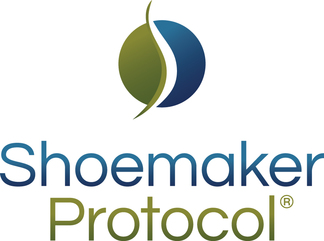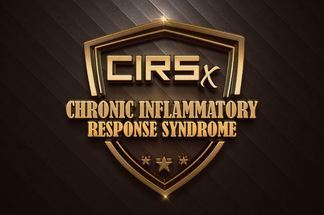Use of GENIE in clinical management of CIRS patients

This is second edition of Medical and Legal Issues in CIRS.
Use of GENIE in clinical management of CIRS patients
The addition of the new transcriptomic test, “Gene Expression: Inflammation Explained (GENIE)” to the tool box of the CIRS physician is a remarkable advance. For the first time, we can use differential gene activation to unveil the underlying complex physiology seen in patients with multisystem, multi-symptom illnesses typified by chronic fatigue. Identifying the basis for the illness leads to effective treatment protocols. We are in a new era!
BACKGROUND: GENIE is a gene expression assay composed of 188 genes that is performed on a single blood specimen. The development of the GENIE assay began with complete transcriptome sequencing of CIRS patients using RNA Seq. Out of an array of 20,000 protein coding and 30,000 non-protein coding genes, we identified 1900 genes found to be differentially expressed in CIRS patients compared to controls. Because whole transcriptome sequencing is still too expensive and cumbersome for targeted primary care practices, we decided to distill and transition these gene expression findings onto a faster, less expensive and more reproducible platform. This list of genes was distilled to 225, those having the most important impact in understanding the inflammatory nature of CIRS. Of the 225, 173 of sufficient intensity and dynamic range made it through the final validation, with another 15 used as housekeeping, or genes that are expressed similarly between CIRS patients and normal healthy controls, for a total of 188. The platform is a two-probe system, one for capture onto a matrix (called a cartridge) and one for detection, called a reporter probe. The captured RNA reporter complex is then read using sophisticated cameras to capture images of the fluorescent reporter probes. GENIE maintains quality, lowers cost, reduces inaccuracy in complex testing and provides a quicker turnaround time.
Once blood has been drawn properly into PAXgene tubes used to prevent breakdown of RNA, then the tubes are inverted ten times and kept at room temperature for 4 hours. At the end of this development phase, the tubes are then frozen. When convenient, the tubes can be shipped in a batch with others on dry ice to the testing facility. On February 14, 2019 we expect that the integration of George Washington University as our service lab will be completed.
Results can be reasonably expected in about 30 days. Possible sources of delays will come from inadequate amounts of RNA in a specimen or specimens shown to be of poor quality for unknown reasons. This is why we draw duplicate tubes for every sample. Patients with profound hypometabolism typically produce lower amounts of RNA and sometimes this low amount drops below the minimum amount to run the assay effectively.
KEY CONCEPT: The most important question that GENIE will answer is whether or not the lab results show hypometabolism. We look for suppression of ribosomal genes (found in (i) large and (ii) small subunits) in treatment-naïve patients to show such hypometabolism. Similarly, mitochondrial genes that are encoded in the nucleus (Note: of the over 1000 mitochondrial genes only 37 are located in mitochondria; the rest are in our nuclear DNA and thereby subject to regulation of nuclear DNA transcription). The mitochondrial genes that we look at include (i) electron transport genes; (ii) inner and outer membrane protein transport genes; and (iii) ATP synthase genes. We also look at ribosomes inside mitochondria called mitoribosomes, both as the (iv) large and (v) small subunits.
We find variation in expression of all of these different genes according to stages of therapy. Clinicians need to report if the blood sample is (i) before treatment; (ii) after the first eleven steps of the treatment protocol; (iii) during or after VIP; or (iv) after completion of VIP.
As a side note, extensive research is ongoing looking at abnormalities in expression of insulin receptor substrates together with abnormalities in glycolysis. Expect some exciting news soon!
BEYOND HYPOMETABOLISM: The finding of ribosomal and mitochondrial gene suppression will lead to effective therapies, usually including VIP. We also can use GENIE for differential diagnosis. For example, abnormalities in expression of defensins can mean ongoing bacterial or viral infection.
If we are looking for inflammation as part of the differential diagnosis, we should see abnormalities in gene expression for cytokines. Seeing which cytokine is activated, or which nuclear transcription factors are activated, and to what extent, is invaluable in leading to early steps in the treatment protocol leading up to VIP.
In differential diagnosis, Lyme disease will often be considered; in our recent VIP survey of Surviving Mold physicians 55 of 163 patients who needed VIP to resolve persistent illness were considered to have Lyme disease at some time. Since the seminal work of Bouquet and Chiu in 2016, we can see a transcriptomic signature for Lyme disease before antibiotics and after.
Vital to management of CIRS patients is the near universal appearance of abnormalities in coagulation, with von Willebrand’s profile helping us understand causes of excessive bleeding or excessive clotting. Coagulation abnormalities are defined by GENIE and made recognizable for CIRS physicians. In the paradoxical patient who has easy bleeding due to coagulation gene(s) suppression who undergoing initial steps of treatment, the genes for coagulation can “overshoot” in therapy resulting in deep vein thrombosis and pulmonary emboli. Stabilizing the pendulum swing of coagulation genes with VIP can restore normalcy to coagulation. Note that untreated elevated levels of coagulation abnormalities will bear strong evidence to avoid use of intravenous therapies, especially PICC lines in affected Lyme patients.
Of all the cytokines, TGF beta-1 has some of the most important implications in CIRS. There can be both differential gene activation and suppression from elevated TGF beta-1. The measurement of several TGF beta-1 receptors with GENIE helps us understand what may actually be transduced into the cell. Does high TGF beta 1 drive the same response in white blood cells when the receptors are low? How about low TGF beta when the receptor expression is high? Information regarding such inflammation from these findings is available nowhere else.
Given the chemical mixture found inside the interior environment of water-damaged buildings, for years we have said that there is no way to assign specific causation of human illness following exposure to any one of many different elements that could conceivably activate inflammatory response. Those days may be coming to a close in that using clusters of differentiation (CD) we can identify evidence of the effect of (i) bacterial endotoxins as well as (ii) beta glucans. Moreover, CD markers measured by GENIE will let us understand better the mechanism of defective antigen presentation, often impaired in CIRS, initiated from antigen presenting cells to elements of the T-cell immunological synapse. Once again, these data are only available through GENIE. This is an important finding: back in the old days we thought only HLA was involved in defective antigen presentation. We can no longer assume that once a patient was a CIRS patient, one would always have susceptibility. Given that we can now correct some of T-cell synapse abnormalities it is quite possible that CIRS can actually be cured.
We use specific markers looking for gene activation by mycotoxins in addition to actinomycetes. In the pre-GENIE era, it was felt by some (incorrectly) that mycotoxins were a relevant parameter to follow, especially with urine testing. The sad truth is that nearly all healthy control patients will have ample mycotoxins in their urine if they eat any kind of stored food, but true mycotoxin effect on the genome is short-lived. Known exposure will show mycotoxin gene activation, but that activation clears in approximately two weeks. Presence of mycotoxins in urine in the absence of GENIE confirmation of mycotoxin effect simply doesn’t matter.
The idea needs to be underlined that CIRS is a transcriptomic illness. Know the transcriptome and know the illness. If you don’t know activation of given genes, you don’t know the illness.
FOR THE NEAR FUTURE: One of the least studied but potentially most important features of CIRS is the role of defective apoptosis. Apoptosis itself, known as programmed cell death, involves orderly destruction of cells through step by step activation of caspase pathways. Unhealthy cells are targeted by cytotoxic T cells and natural killer cells (NK cells). These white blood cells kill unhealthy cells with the help of enzymes called granzymes. If we find suppression of caspases in the face of activation of granzymes then we need to be looking for markers for defective apoptosis. If we find those, the result of defective apoptosis is inflammation caused by pathological release of intracellular particles upon cell lysis, including free DNA and cell organelles. We are only beginning to appreciate defective apoptosis a source of endogenous inflammation.
Examples of defective apoptosis include necroptosis, pyroptosis and ferroptosis. There are at least ten other -optoses referenced in the literature.
We mention insulin signaling in passing. We know that hyperinsulinemia, a factor in development of obesity and Type II diabetes, is part of an inflammatory syndrome. We can look at the inflammatory effects of elevated insulin and see it also includes an interaction of glucose receptors and insulin receptor substrates. These features all feed into regulation of sugar breakdown (glycolysis) that has interaction with inflammation and mitochondrial function as well. It sounds complicated! Our focus on insulin receptor substrate, and insulin growth factor receptors and binding proteins will shed light on this promising line of inquiry.
Some of the definitive findings that we will see are the levels of VIP receptor one. The effects of VIP found in plasma are dependent on adequate VIP receptors on cells. If VIP levels are low and VIP receptors levels are low, then the patient has a real problem. If VIP receptors are elevated and VIP therapy is initiated prematurely, response can be untoward if there is already ongoing suppression of genes and hypometabolism.
Additional markers of interest include B-cell receptors having a role in chronic pain. Work done by CIRS physician, Lysander Jim, MD, has shown that chronic pain is associated with specific NeuroQuant injury. Our findings showing specific changes of CD markers on B-cells being elevated in chronic pain is curious as it doesn’t make much such sense that antibody producing cells would have a role in chronic pain.
Toll-receptorsare widely discussed in the literature. We look for Toll-2 and Toll-4 activation, together with other intracellular Toll as providing information about innate immune activation.
There are nuances of interpretation based on individual genes that will be discussed on an individual basis with ordering physicians. We understand that the jargon of transcriptomics is dense, but it is not impossible to comprehend. Once use of some of these terms become familiar, they will become your trusted allies in healing some of the sickest patients you will ever see.
These are some of the highlights of the focused 173 genes on the GENIE test. We hope our report will lead you and your patient to a deeper understanding of their illness that has been refractory to care. We are available for consultation on a weekly basis.
Ritchie C. Shoemaker MD
James C. Ryan, PhD
Featured Resources for Community
Shoemaker Protocol™ Quick Start:
The 3 initial steps to determine if mold is affecting you One of the most common questions we hear is, “how do I know if I have mold illness?” Rest assured, if you’re asking this question, you’ve come to the right place.
AirOasis The #1 CIRS Spring Cleaning Hack
Specialized air purifiers are revolutionizing deep cleaning, no matter the season. They’re a game changer for remediation purposes, too.
CIRS Spring Cleaning Checklist
Living with CIRS means cleaning and maintenance efforts must be ongoing and up to CIRS-safe standards. Spring is a perfect time to do a thorough examination and cleaning of the entire home and create a schedule for the year ahead.
CIRSX Annual Conference June 5-8, 2025 in Tempe, Arizona!
Early Bird Discount ends March 7!
NEW EPISODE! Dr. Shoemaker on Episode #211 of the BetterHealthGuy Podcast!
New Episode! Dr. Shoemaker joins Scott on the BetterHealthGuy.com podcast to talk about the use of GENIE testing in Chronic Inflammatory Response Syndrome.




